The wide variety of anthology series that have emerged in contemporary TV can be attributed in part to the success of series such as Black Mirror and The Twilight Zone. And despite the competition, new anthology series’ frequently find success. But how? There isn’t a secret formula to a great anthology production. The greatest advantage is, in fact, an understanding of the format and its potential. So let’s take a look at what it takes to write an anthology series as well as some of the best anthology series examples.
Table of Contents
- What is an Anthology Series?
- The Benefits of an Anthology Series
- The Key Steps to Write an Anthology Series
- The Best Anthology Series Examples
- 1. Love, Death and Robots
- 2. Fargo
- 3. High Maintenance
- 4. Black Mirror
- 5. The Twilight Zone
- 6. American Horror Story
- 7. American Crime Story
- 8. Easy
- 9. Inside No. 9
- 10. Small Axe
What is an Anthology Series?
An anthology series is a series that runs for multiple seasons or episodes, with constantly changing settings, plots, and characters. These elements may change from episode to episode or from season to season.
- Often, for example, the setting of an anthology series changes with each episode. Here, each episode will piece together to tell an overall story. Each episode may be its own self-contained story.
- This, though, is not essential to the structure and definition of an anthology series. Skins and Genius are great examples of season-spanning narratives. They’re linked only from season to season by their respective themes.
Theme, overall, is an incredibly important aspect of the anthology format. This is because it’s used to establish a tone for the programme that is constant throughout. Theme often takes the place of other more typical constants (like setting or characters). For instance, Fargo changes its characters at the end of each series. However, the subject of crime in Fargo, North Dakota stays consistent.
The most common genres of anthology are horror and speculative fiction, a form of science fiction popularized in the 60s. And the genre is favoured due to the pace at which intrigue can be established in a single episode. This kind of anthology series typically sets up a unique premise and executes this premise in one episode.
There are some typical genres and subjects that an anthology series will deal with; crime, sci-fi, horror, and true stories. However, there is ultimately no limitation to the subject of an anthology series. Ultimately, the definition of an anthology series rests on the series’ ability to tie together varying storylines convincingly, whatever the method.
The Benefits of an Anthology Series
Perhaps the greatest advantage of anthology writing is the ability to tell interesting stories that don’t necessarily have the potential to span the entire length of a series or film. It’s somewhat of a middle ground in this sense. Episodes, for example, often exceed 45 minutes, preventing them from qualifying as a short film or a feature.
In addition, on a certain theme, an anthology series may be a better way to reach a more profound truth about this theme than a traditional narrative structure. An anthology series presents the opportunity to include a wide variety of characters, settings and ideas. This can be an antidote to a restrictive story that only deals with one set of characters, location or storyline. Thusly, a more holistic take on the theme at hand is potentially achieved.
An anthology series also allows an audience easy access to the abundance of ideas a writer may have. Moreover, in terms of marketing, this format grants producers more freedom to approach bigger names for collaboration. This applies both in front and behind the camera. And this, consequently, grants publicity to the project in lieu of brand or story recognition. An anthology series allows for a multiplicity of perspectives in this regard.
What I would love to do, more than anything, is just anthologies. With an anthology, you can tell any story and be in every division of television.
Aaron Spelling
As a whole, anthology series’ frequently allow a greater amount of creative expression than a conventional TV series. This creativity can lead to the development of a cult following. For instance, with the emergence of social media, shows such as American Horror Story have amassed large communities pouring over the stories. In turn, this created the ground for spin-offs: American Crime Story and American Horror Stories.
The Key Steps to Write an Anthology Series
1. Find a Subject
When penning an anthology, a screenwriter is typically granted more freedom from the conventional format of a TV series. They’re able to explore stories with limited potential without padding plotlines for added runtime.
So to write an anthology series, it’s best to choose a simple concept for your anthology theme.
- Black Mirror, for example, is able to create a wide variety of scenarios for its episodes because of its broad focus on technology.
- All the stories riff on the idea of technology’s effect on society.
- Thusly the series can go off in a variety of directions in terms of the plots it follows.
When starting to write an anthology series, find a general subject that interests you. This subject must be one that you have a burning, urgent passion for. Otherwise, you’ll quickly run out of ideas for storylines. It has to be something in your DNA.
- Once you have found this subject, start writing some sketches for short stories around it.
- Break down the stories into bullet points that highlight the beginning, middle and end. This is a great way to simply lay out the potential storylines for your anthology series.
From there, you can build. But laying out the anthology series structure in simple terms allows you to see how much potential there is within it. Do you need to do more research on the subject? Do you have endless potential stories flowing out of you that could fill multiple seasons? These are the kinds of questions that breaking down the potential episodes into bullet points will lead you to.
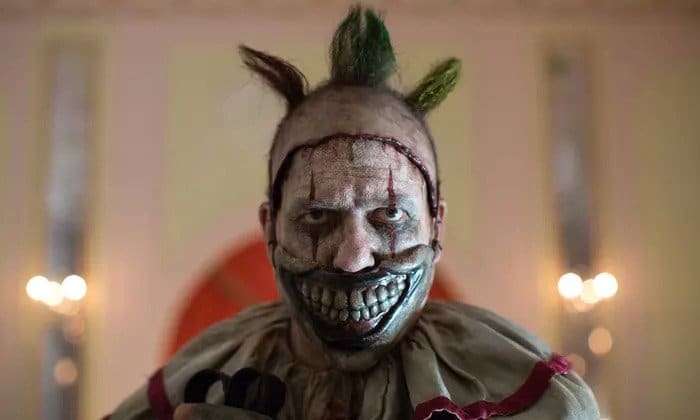
2. Never Forget the Theme
As you continue to build your anthology series, you must never forget the guiding thematic purpose.
Say, for example, you’re writing a season of an anthology series that is its own contained season. It can be easy to lose track of the connection with the series as a whole. This is particularly true if the story is very strong in its own right. The characters, world and plot may be rich enough for you to completely envelop yourself in it as a writer. But that wider sense of what connects this story to the anthology series as a whole must remain discernible.
Take American Crime Story, for example.
- Each chapter, The People v O. J. Simpson/The Assassination of Gianni Versace/Impeachment, is itself an engrossing story.
- But the wider purpose of the format remains in the intention to shine a light on aspects of criminality that permeate the American psyche.
- In the chosen stories, the series deals with a wide variety of contexts and themes; race, sexuality, power, politics, celebrity, and criminal justice.
- They are themes that one self-contained series may struggle to hold together all at once. However, the anthology series format allows each chapter to come together and paint a rounded picture of the themes at the heart of the series overall.
3. Find the Parallels
Another key element to focus on when writing an anthology series is to track the parallels that run across the series. This is another way of weaving different stories together to tell an overall story about the chosen theme.
- For example, who are the characters that parallel one another across different storylines?
- What themes crop up again and again?
- Amidst the vast variety of contexts, what themes or points do the stories always land on?
Tracking these parallels is vital to establishing the consistency that makes up an anthology series in the first place. This is how the series will tie together as a whole. Furthermore, it’s how you leave the audience constantly pondering on the points the series is trying to make.
Whilst there may be wildly different characters, settings and storylines, there typically must be something that connects them all. And this connecting factor will infringe on the characters in ways that highlight parallels and/or differences. This thusly again achieves a further point about the series’ purpose.
The Best Anthology Series Examples
If sitting down to try and write an anthology series, the best place to start is with research. Luckily, there’s an amazing collection of examples to draw inspiration from. These examples highlight the different ways in which an anthology series can manifest. They, therefore, demonstrate the potential within the genre.
1. Love, Death and Robots
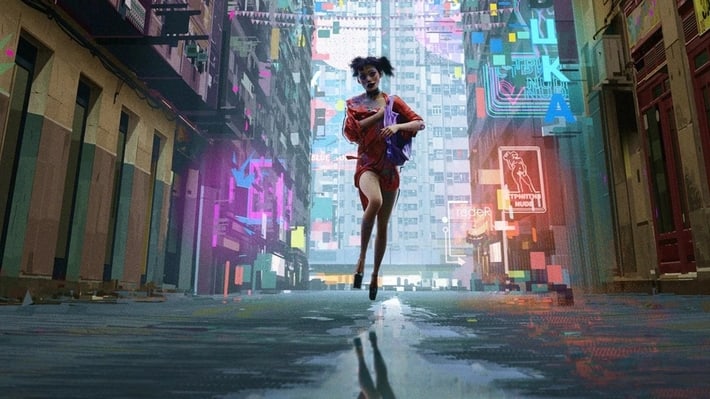
Love, Death, and Robots is a particularly unique series in that each serial features a new animation style. This is a refreshing and original approach to anthology storytelling. The varying animation style adds another layer to the difference between each episode.
Often, serials will occur in a dystopian/futuristic environment, allowing for an impressive amount of world-building in each story. And Love, Death and Robots takes ample advantage of this notion. The series plunges us into a distinct world, using the impressive animation almost as a supporting character. The vivid worlds, seen through the evocative animation, do a lot of the legwork in terms of conveying the story.
On top of all this, the episodes are typically under 20 minutes, making for an easy viewing experience. Each episode doesn’t necessarily address all three titular topics, but it will address one of them at least.
If you haven’t seen it, we recommend beginning with episode 3, The Witness. It’s an excellent introduction to the show and features a beautifully abstract artistic style. Moreover, the story is fast-paced and genuinely frightening. Overall, Love, Death and Robots is the perfect example of anthology series that is bound together by efficient storytelling and beguiling craft.
2. Fargo
Based on the Coen Brothers classic of the same name, Fargo features award-winning narratives and a star-studded cast. Created by Noah Hawley, the show follows a plethora of crimes through various eras and the characters that surround them. However, mystery increases as each case leads back to the town of Fargo, North Dakota.
So it lifts the essential premise of the movie it shares its name with; crime in Fargo. It takes place in the same fictional universe as the film. Whilst all the storylines are different, there are some minor overlaps and references throughout.
It’s a great example of an anthology series tied together by a unique world. The world the film built originally was enough to create the ground for a rich and varied number of storylines with a similar tone and context. And the series expands this world.
Each season is essentially strong enough to exist on its own two feet. However, the guiding lights of tone and setting provide some consistency. Importantly, they give some guarantees to the audience as to what they can expect.
3. High Maintenance
High Maintenance tells the story of a New York-based cannabis courier and his wide array of clients. Created by Ben Sinclair and Katja Blichfeld, Sinclair leads the show as the unnamed protagonist.
The programme ran from 2012 until 2020 for four seasons. Each episode offers a dive into the life of a different customer while the dealer races to fulfil their demands. High Maintenance is an excellent example of a character-driven anthology series, each story deriving plots from the customers’ conditions or requests.
Consequently, its format allows it to explore the wide variety of characters that make up its setting, Brooklyn. It demonstrates how an anthology series be used to reach further than just a traditional narrative structure can.
Yes, the protagonist is at the centre of the show. But because the focus is on those he interacts with, the series can venture in several directions. Ultimately it tells a holistic story of its setting. And it does this through one character, rather than focusing on one corner of this setting.
4. Black Mirror

After its minimalistic debut on Channel 4, Black Mirror established itself as a modern classic after moving to Netflix and captivating viewers worldwide. Subsequently, it’s probably the most well-known and successful modern example of an anthology series.
Created by Charlie Brooker, the mind behind projects such as Dead Set and Death to 2020, the programme has attracted a host of A-list actors since its conception in 2011. And this ability to attract A-list talent stems from the unique and brilliant premises that underpin each episode. After the first few seasons were popular, each episode became an event in and of itself; a vehicle for a well-known star and a captivating individual idea.
The theme is at the core of what drives the series; the notion that contemporary society is vulnerable to rapidly developing technological innovation. The black mirror is the screens we spend our lives gazing into. And the series explores the effects this black mirror has on those staring into it. This concept carries the series through an enormous variety of contexts and sub-themes.
Whilst each episode tackles a separate idea, the series overall is bound together by its sharp satirical intentions. At all turns, it knows where it stands on the power of technology to affect society. And this allows the audience to settle in and let the series take them on a vast array of journeys. This comfort is vital in lessening the burden of having to get used to a new host of characters and settings each time.
5. The Twilight Zone
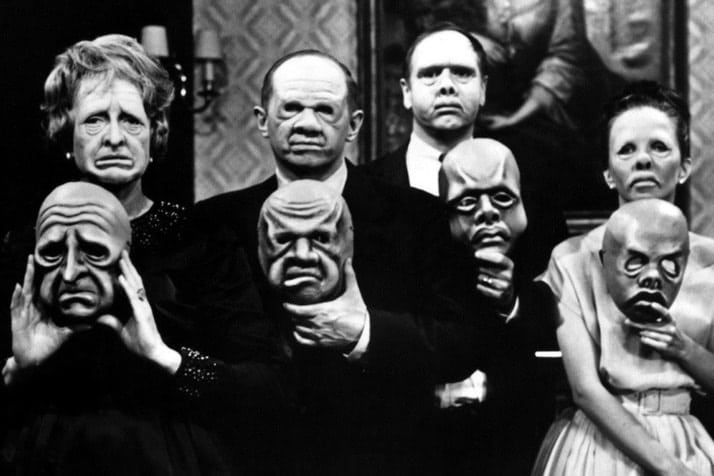
The Twilight Zone is one of the oldest and most beloved anthology series. The concept has undergone several reboots, including the infamous Twilight Zone Movie.
Created by Rod Serling, who served as the host and wrote more than 80 episodes, The Twilight Zone featured a strange combination of science fiction, horror and comedy. Serling even influenced renowned Sci-Fi writer, Gene Roddenberry: creator of Star Trek, who went on to give his eulogy.
Twilight Zone was foundational in the formulation of the concept of an anthology series. It demonstrated TV‘s ability to lure audiences in with the promise of the unexpected. Still today, it brilliantly illustrates how to execute individual stories laced with mystery. This mystery, in turn, pulls the audience into each episode.
The overarching theme is science fiction. However, it’s the strange, mysterious tone that ties the series together and keeps audiences coming back to each episode.
6. American Horror Story
American Horror Story is perhaps the pinnacle of contemporary anthology writing. From Ryan Murphy and Brad Falchuck comes a frightful collection of serials with a recurring cast of distinguished stars.
Each season takes a particular horror setting or theme as its subject. Series 4: Freak Show, for example, is based on the mistreatment of circus performers in the 1950s. Whilst Series 3: Coven follows a witches’ coven and those they have to fight against.
Horror is the aim of the game in all of the series’ seasons. And the series as a whole is tied together by the intention of shining a light on different facets of the horror genre, within a particularly American context.
While a large majority of writers opt to develop their ideas alone, American Horror Story is an example of multiple individuals contributing to the same series. This is likely a large contributing factor to its success. This is a good lesson in developing a long-running anthology series. It’s another aspect of consistency. This consistency, in turn, allows the series to feel like a cohesive whole, despite its many different directions.
7. American Crime Story
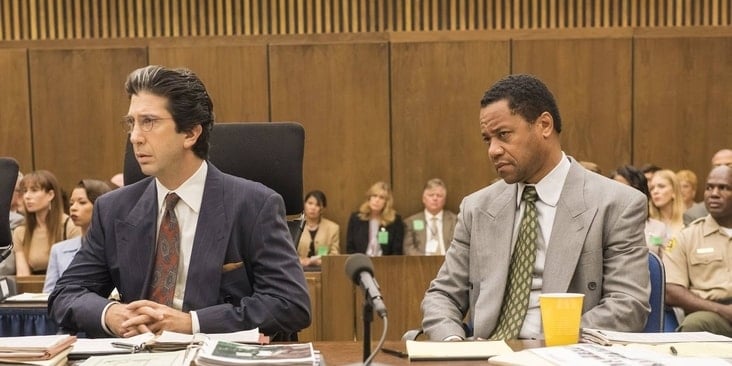
From the makers of American Horror Story, American Crime Story turns the spotlight on famous American crimes. Like its sister show, it explores the contours of American society through genre and a specific focus.
- The first season tackles the trial of O. J. Simpson.
- The second tackles the murder of Gianni Versace.
- And the third takes on the sexual misconduct of Bill Clinton and his subsequent impeachment.
Again, each topic is very different. However, thematically they’re linked. Each story tells a tale of the American justice system and crime colliding with fame.
Not only is there plentiful meat for the series to get its teeth into in terms of the story, but the facts of the chosen stories provide perfect marketing material. For instance, the famous roles, such as Bill Clinton or O. J. Simpson, serve up great opportunities for star actors.
Furthermore, the already well-known stories mean that half the marketing of what the show is actually about is already done. Audiences are keen to see how these stories will be rendered on-screen. In this way, true stories can often make great material for anthology series. The drama is tied together by something outside of its fiction; the audiences’ knowledge of the story’s context.
8. Easy
Orlando Bloom and Dave Franco are just a few of the recognizable names attached to Easy, a critically acclaimed romantic-comedy series created by Joe Swanberg. The series explores different romantic arcs via a wide range of characters in Chicago.
It takes love as its overall theme. This seems pretty broad at first glance. However, really its focus is on the realities and truths of relationships in all their myriad forms. There are stories of marriages on the rocks, people exploring their sexuality and a couple coping with their romantic life in light of being parents, for example.
The show works because of the intimacy of the depiction of these different lives. There are some overlaps and recurring characters. But mostly, the series is tied together by the honesty with which it renders the relationships and characters at hand.
9. Inside No. 9
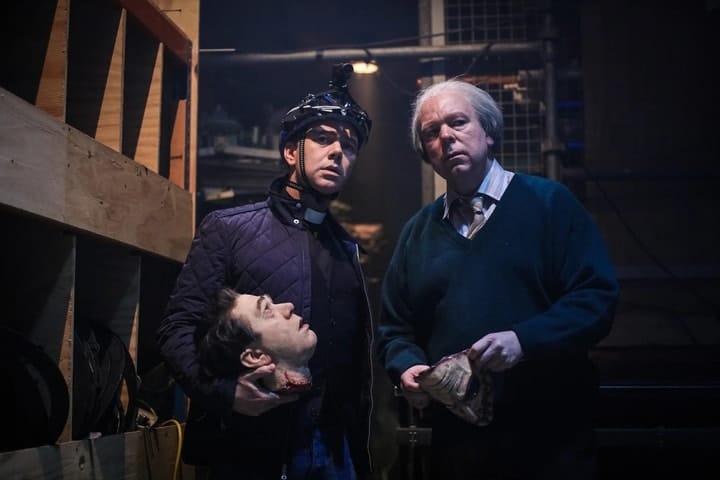
After the success of their cult classic TV hit: The League of Gentlemen, Reece Shearsmith and Steve Pemberton created dark comedy anthology series, Inside No. 9.
The programme follows stories set in locations relating to the number 9. It’s perhaps the loosest connecting factor of all the anthology series on this list. However, it’s convincing in part due to the genre, comedy, and the unique and offbeat tone.
- Themes differ in each episode, but all have strong elements of comedy and horror, as well as a plot twist.
- The show is excellent at subverting expectations. It creates plot threads that may seem innocent to begin with, but often take a sinister turn.
Overall, it demonstrates the wide-ranging ability of anthology series in covering different genres. It’s a great example to anyone wishing to create comedy in general. It shows how instrumental a guiding tone is in tying together a series as a whole. Each storyline may be different, but we’re always sure of the world we’re in; that of the creators’ twisted and darkly humorous minds.
10. Small Axe
Helmed by 12 Years a Slave director, Steve McQueen, Small Axe is a powerful collection of five TV movies. Each episode is based on various groups of West-Indian immigrants living in the UK during the late 20th century.
It tells a mix of real stories, like that of the Mangrove Nine (in Mangrove) and fictional ones, based on real experiences (in Education). Each episode builds an overall picture of the experience of West-Indian immigrants from the 1960s to the 1980s. The anthology format, therefore, allows a variety of different stories to be told.
No single story is enough to paint the collective real-life experience. So the anthology series format allows a multitude of different experiences to be portrayed. This has, overall, a profound effect. We see the different ways in which racism permeates different experiences and facets of society, for example.
And most of all, a variety of previously untold stories come to the fore. Each one supports the other. This allows for them to, as a unit, be even greater than the sum of their parts. Ultimately, there’s no better ambition to have when seeking to write an anthology series.
– What did you think of this article? Share It , Like It , give it a rating, and let us know your
thoughts in the comments box further down…
–Struggling with a script or book? Story analysis is what we do, all day, every day…
check out our range of script coverage services for writers & filmmakers.
This article was written by Noah Green and edited by IS Staff.
Get *ALL* our FREE Resources
Tackle the trickiest areas of screenwriting with our exclusive eBooks. Get all our FREE resources when you join 60,000 filmmakers on our mailing list!



Fantastic article. Thank you
Great article, thank you!
Most welcome Laura!